Think back to your last online order. Smooth delivery? That’s no accident; it’s powered by modern warehouse automation technology and seamless technology in distribution logistics working behind the scenes. As markets grow and customer expectations rise, the pressure on distributors has never been higher. Whether you're managing retail chains or cold chain goods, speed and precision are non‑negotiable.
The old ways, manual tracking, paper trails, and disconnected teams just can’t keep up. They slow everything down, cause delays, losses, and last-mile delivery technology headaches. Even unnoticed issues like pilferage quietly eat into your bottom line.
Smart logistics systems change that. Automation in the logistics industry cuts out repetitive work. The Internet of Things in distribution and real-time logistics tracking brings connection and visibility. Automation, AI in logistics, and predictive analytics in logistics work together for full transparency and control, which builds real trust with customers.
Let’s explore how the future of logistics technology trends are reshaping distribution, what supply chain technology trends are driving the shift, and how a modern transportation management system (TMS) helps bring it all together.
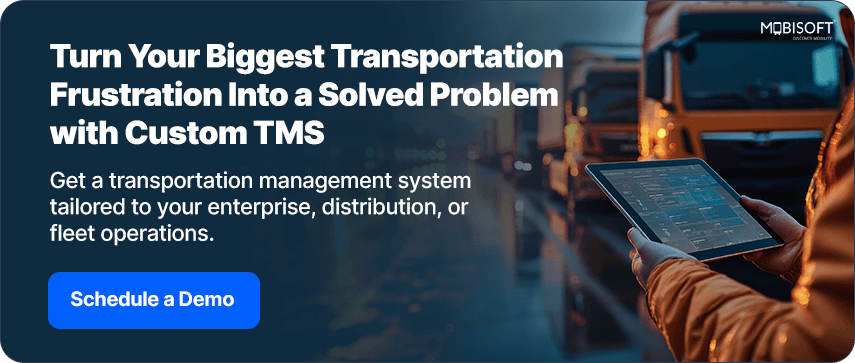
Key Technological Trends in Distribution Logistics
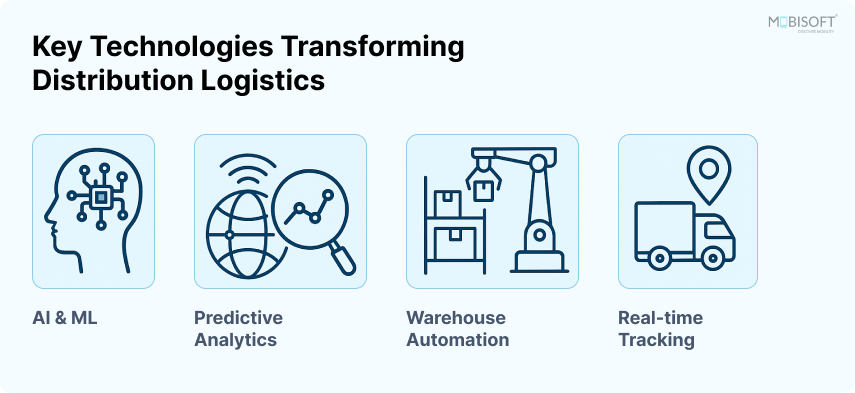
Real-Time Shipment Tracking
Knowing where your shipment is at any given moment is no longer a luxury. It’s a necessity. Real-time shipment tracking allows distributors to follow every delivery, from the warehouse to the final drop. GPS-enabled vehicles offer constant location updates. Mobile apps provide delivery staff with a way to share real-time status, delays, or issues directly from the field. This continuous flow of information helps managers monitor trip progress without making endless phone calls.
If a delivery faces a roadblock, like traffic, bad weather, or route closure, teams can take immediate action. They can reroute the vehicle, inform the customer, and avoid further delay. This proactive control reduces uncertainty and strengthens trust across the supply chain.
Real-time tracking also helps identify consistent trouble spots. If certain locations face regular delays, the data shows it. Teams can plan better routes, adjust schedules, or assign experienced drivers to those deliveries. The result? Fewer missed timelines and better service reliability.
Automation & Digitization

Paper-based processes are slow, error-prone, and inefficient. In today’s fast moving logistics environment, they don’t stand a chance. Automation in the logistics industry and digitization are helping distributors move beyond these outdated methods. Order-to-dispatch workflows can now be fully automated. Once an order is ready, the system automatically assigns a transporter, creates the lorry receipt (LR), and shares trip details with the driver. This eliminates the need for manual coordination or back and forth communication.
This shift toward digital transformation in logistics and cloud logistics solutions enhances scalability. During the delivery, electronic proof of delivery (EPOD) ensures immediate confirmation once the goods are handed over. Drivers can capture a digital signature, scan a barcode, or upload a photo, all from a mobile app. These records are stored and timestamped, providing strong verification. Billing is also automated. Once the POD is recorded, freight charges are calculated based on weight, distance, and delivery terms. The system generates an invoice automatically, speeding up the payment process.
Digitization ensures every document is stored securely. No more missing files, unclear handwriting, or manual rework. It creates an error free, paperless trail that’s easy to retrieve and audit at any time.
Data Driven & Smarter Decision Making
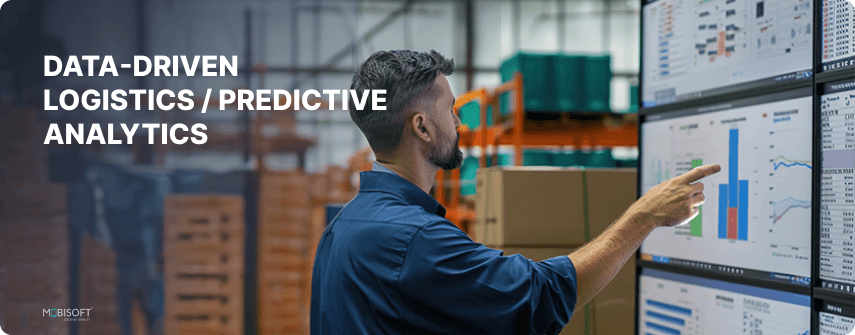
Using data-driven logistics and analytics, teams move from guesswork to precision. With every trip, every delivery, and every customer interaction, systems collect valuable data. When analyzed properly, this data becomes a powerful tool for decision making.
Delivery performance reports highlight on time rates, delays, and delivery exceptions. Route analytics show which paths are efficient and which create bottlenecks. Vehicle utilization reports identify underused assets. All this data helps managers make smarter, faster decisions.
For example, if data shows that a particular zone often sees delays during certain hours, delivery windows can be shifted. If certain products get damaged more often in a specific delivery leg, packaging methods can be reviewed.
Over time, analytics improve accuracy in planning. They help align inventory levels with demand, schedule deliveries more effectively, and reduce costs. They also support future planning by identifying seasonal trends or frequent service disruptions. By leveraging data, distribution teams don’t just react. They anticipate, adjust, and continuously improve.
Mobile Apps and Logistics Software for Distribution
Through logistics software for distribution and mobile apps, drivers and field staff stay connected to the central team. They are the ones who navigate the roads, handle deliveries, and interact with customers. Mobile apps help them do their jobs better.
Trip information, delivery addresses, customer contacts, and navigation routes are shared directly with the driver’s phone. If there are changes, like a new stop or timing adjustment, these updates are sent instantly through the app. Drivers can also report issues right away. Whether it’s a delayed pickup, a rejected delivery, or a traffic jam, field staff can inform the back office in real time. This level of visibility ensures that no information gets lost in transit.
Proof of delivery is also captured through the app. This could be a signature, a barcode scan, or a photo upload. The system saves it with a timestamp, creating a reliable record. Mobile apps reduce the dependency on calls, paper documents, or memory. They empower field staff to make informed decisions, complete tasks faster, and deliver with greater accuracy.
Benefits of Technology Adoption in Distribution Logistics
Improved Delivery Accuracy and Speed
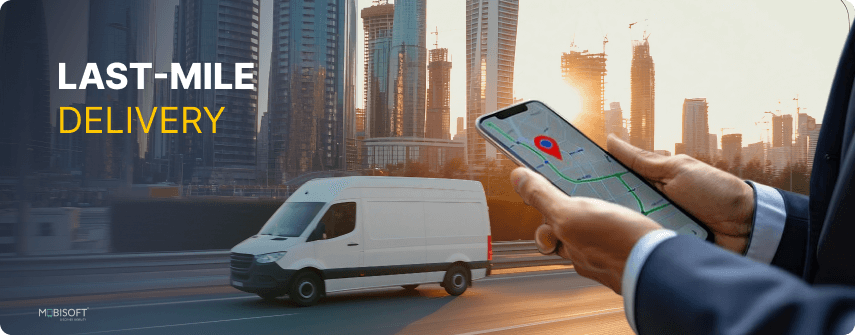
Technology takes the guesswork out of delivery. Smart planning tools group deliveries based on proximity, load size, and customer priority. This results in optimized routes and faster turnaround times. Real-time tracking ensures that drivers stay on schedule. If delays occur, teams can adjust in real time. Customers are informed proactively, avoiding frustration and improving the overall experience.
Automated workflows remove manual bottlenecks. With fewer touchpoints and faster approvals, delivery cycles get shorter. This speed doesn’t come at the cost of quality; it comes with better accuracy. When deliveries are both fast and correct, customer satisfaction soars.
Enhanced Transparency for Customers and Partners
Customers no longer accept vague delivery timelines. They want precise updates and full visibility. Technology makes this possible. Tracking links allow customers to follow their shipments in real time. Notifications keep them informed about delays, dispatches, and deliveries. This reduces calls to support and builds trust.
Powered by IoT in distribution, internal teams also benefit. Sales, customer support, and warehouse staff all get access to the same real-time information. Suppliers and transport partners can also track their shipments. This level of transparency creates accountability across the ecosystem.
Reduced Operational Costs and Increased Scalability
Technology improves efficiency at every stage. Optimized routing reduces fuel costs. Automated dispatching cuts down on labor hours. Digitized billing speeds up payments and reduces financial errors. Thanks to logistics technology solutions and centralized control, smaller teams can manage larger volumes. This means distribution operations can scale without dramatically increasing costs.
When systems are integrated, teams don’t have to duplicate efforts or maintain separate logs. This reduces administrative overhead and frees up time for strategic tasks. As the business grows, the same platform supports more deliveries, users, and locations without losing efficiency.
Better Compliance and Audit Readiness
Regulatory requirements are getting stricter. From tax laws to safety standards, distributors need to stay compliant. Manual systems often fall short here. Digital documentation provides secure, accurate records for every transaction. Whether it’s an invoice, a proof of delivery, or a trip log, the system stores it safely and organizes it for easy access.
Audits become smoother when all records are centralized and verified electronically. Time-stamped logs prove accountability and reduce disputes. In sectors like cold chain or FMCG, this level of compliance is essential. It protects your business and reflects the role of digital transformation services in supply chain success.
Overcoming Distribution Challenges with TMS
Distribution logistics involves many moving parts. Without a centralized system, managing all of them is tough. Teams work in silos. Communication breaks down. Mistakes happen. A modern customized TMS for distributors solves these problems.
TMS platforms bring all core logistics functions together. You can plan routes, assign vehicles, track deliveries, and manage documents, all from a single dashboard. Dynamic route planning ensures that trips are built around delivery clusters, volume, and customer deadlines. This makes every vehicle trip more efficient and predictable. Automation handles repetitive tasks. Orders are assigned automatically. LRs are generated instantly. Dispatch teams gain real-time visibility without needing to chase updates.
Tracking features show the live location of every delivery. Managers can identify delays, estimate arrival times, and take prompt action when necessary. This improves last-mile performance and customer satisfaction. Document management is built in. Freight charges are calculated automatically. Invoices and PODs are generated digitally. No more paper trails or missed payments. A modern TMS removes friction from distribution logistics. It increases control, reduces errors, and enables seamless collaboration across teams.
Conclusion: The Tech-Enabled Supply Chain
Distribution today is about more than just moving goods. It’s about moving faster, staying accurate, and keeping everything visible and connected. And technology makes that possible.
With real-time tracking, you always know where your shipments are. Automation speeds up processes and cuts down errors. Data helps you make smarter calls. And mobile tools keep your teams on the ground in sync and ready to act.
With a tech-enabled supply chain, the future of logistics technology, and a unified TMS, operations run smoother. Deliveries happen faster. Customers stay informed and feel valued. Losses go down. Transparency goes up. And as your business grows, your costs stay in check.In a fast-moving world, sticking with outdated systems holds you back. The right tech doesn’t just help you catch up, it helps you lead.
If you’re ready to build a stronger, smarter distribution network, it starts with transforming your logistics through technology.
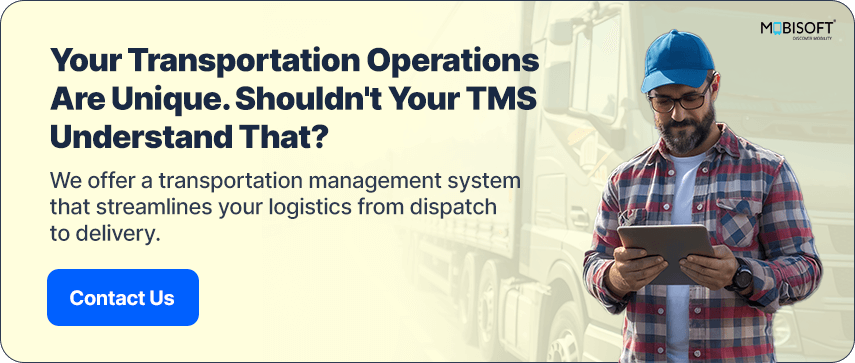




 June 10, 2025
June 10, 2025


